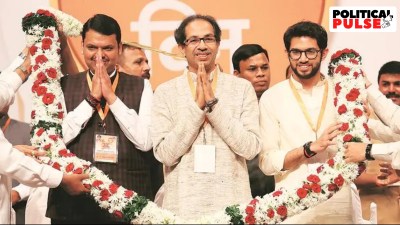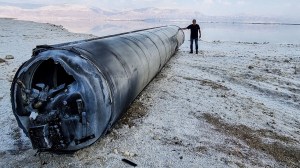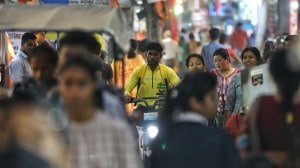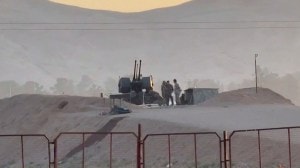- India
- International
Debts due to poor income, suicides, high interest loans — Punjab farmers don’t paint a rosy picture
Punjab farmers, who have been at the helm of the agitation at Delhi borders against the Centre’s farm laws, have been called a "pampered lot" and a "major beneficiary of the MSP regime". Is this true?
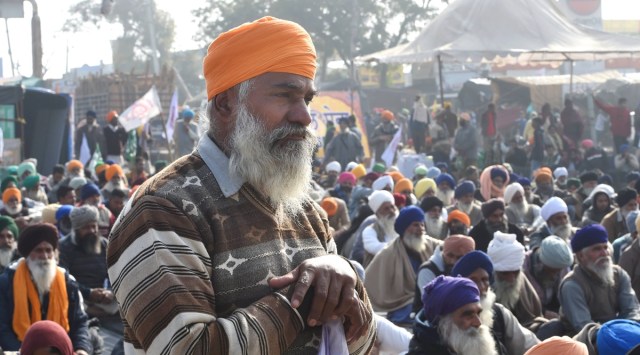
Punjab farmers, who have been at the helm of the agitation at Delhi borders against the Centre’s farm laws — which entered its 50th day Friday — have been called a “pampered lot” and a “major beneficiary of the MSP regime”. It has been claimed that Punjab farmers’ income is highest among the states as the purchase of their wheat and paddy is the government’s responsibility at a fixed MSP. Based on recent studies and surveys, farm experts present an altogether different picture in a discussion with The Indian Express.
According to Professor Sukhpal Singh, principal economist, Punjab Agriculture University (PAU), Ludhiana, 89 per cent farmers in Punjab are under debt. “There is no doubt that the average farm size and income of Punjab’s farmers is higher than their counterparts in other states and our wheat and paddy are also commercial crops because of government purchase. But it is not sufficient as to meet the agriculture and non-agriculture needs of farmers of the state,” he said.
“To be precise, there is Rs 1 lakh crore debt on Punjab’s farmers and if one goes by the total number of farm households, which is around 10.53 lakh in Punjab as per the 2015-16 agriculture census of the government, on an average, there is a Rs 10 lakh debt on every farm household in the state. While the average income of every farm household in Punjab is Rs 6 lakh, it should not be confused with the incomes of the small, marginal, semi-medium farmers, which is very low,” he further said, adding that cotton crop had turned out bad six years continuously from 1997 to 2003 in Punjab, due to which the farmers come under heavy debt both from banks and private sector. That debt could never be paid off and it mounted further.
“If Punjab’s farmers are so prosperous then why are they leaving farming? Twelve per cent farmers have left farming and the number of small and marginal farmers has come down from five lakh in 1991 to three lakh in 2001,” said Prof Singh, adding they have either migrated to urban areas/overseas to become labourers or sold their lands.
He said that “liberalisation, privatisation and globalisation policies led to privatisation and commercialisation of the service sector including education, health, transport, and other daily use goods which cannot be fulfilled with farm income”. There is no major source of other employment in the state where on an average six industrial units closed between 2007 and 2015 (18,700 industrial units closed in a span of 8 years), while to support small and marginal farmers, employment in other sectors for family members was a must.

Farm suicides
“Our door to door study on farm suicides by three Punjab universities spanning over 17 years, which concluded in 2018, revealed that 9,300 farmers and 7,300 farm labourers died by suicide in 17 years in Punjab out of which 88 per cent farm suicides occurred due to heavy debt while 77 per cent of them were the small and marginal farmers, who constitutes 35 per cent of the farming households in the state,” said Prof Sukhpal, adding that for mounting debt, banks are equally responsible, charging 13 per cent interest for a tractor loan which will be used for productive activities, but 4 per cent on cars. “Luxury items should be sold at the higher rate of interest but not farm implements,” he added.

Domestic needs
Another survey titled ‘Indebtedness among farmers and agricultural labourers in rural Punjab’, a field survey conducted a couple of years ago by professors of Punjabi University Patiala and sponsored by the Indian Council of Social Science Research (ICSSR), New Delhi, revealed that due to inability to meet their expenditure with their poor income, farmers have been spending around 30 per cent share of their total debt on meeting their domestic needs, maintaining their families, repairing houses, on health, education, and socio-religious purposes.
The survey was conducted in various villages of three different regions of the state including south-west (Mansa district), central plains (Ludhiana) and Shivalik foothills (Hoshiarpur) regions in which farm households in the category of marginal, small, semi-medium, medium and large were included.
The study shows that 68 per cent farmers have incurred major debt for purchase of farm inputs in three regions of the states. But domestic needs are the second major purpose of debt for marginal farmers (less than one hectare of land) is all the regions and small farmers (upto two hectares) in the south-west region. The share of domestic needs, major repairs of households and socio-religious ceremonies is around 30 per cent of total debt in the three regions of the state.
The survey revealed that small and marginal farmers are mostly dependent for their loans on non-institutional sources, which charges a high rate of interest and has a non-transparent system, as on an average 45 per cent marginal farmers and 30 per cent small farmers are taking debt from such institutions in three regions.
“Private or non-institutional sources are not under the control of the government and charge the interest as per their own wish,” said farmer union leader Sukhdev Singh Kokrikalan of Bhartiya Kisan Union Ugrahan.
Prof Gian Singh, who led the study ‘Indebtedness among farmers and agricultural labourers in rural Punjab’ said that the condition of small and marginal farmers and agricultural labourers is the worst because of fewer land holdings and no availability of required work hours, respectively.
Prof. Singh said they need extra employment to meet their basic seven requirements including food, shelter, health education, social security etc.
“Surveys are enough of an eye-opener for those who call Punjab’s farmers prosperous and pampered,” he said, adding that severe economic and social distress, rising number of suicides especially among small, marginal and even semi-medium farmers, is the bitter reality of the state.
Apr 20: Latest News
- 01
- 02
- 03
- 04
- 05











